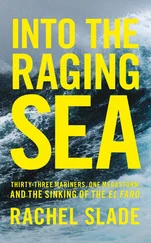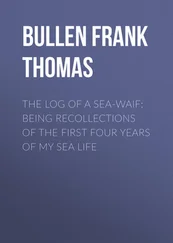In spite of a moderate shear—competing crosswinds that most forecasts predicted would blow it apart—at midnight on September 29, Eleven evolved into Tropical Storm Joaquin.
TROPICAL STORM JOAQUIN/ADVISORY NUMBER 6: 0900 UTC TUE SEP 29 2015: TROPICAL STORM CENTER LOCATED NEAR 26.6N 70.6W AT 29/0900Z. PRESENT MOVEMENT TOWARD THE WEST AT 4 KT. MAX SUSTAINED WINDS 35 KT WITH GUSTS TO 45 KT.
Throughout Joaquin’s evolution from depression to hurricane, the NHC could only guess at how it would develop, and what path it would take. The center issued discussions—carefully worded explanations of its forecasts of the storm system’s path and intensity. Embedded within these discussions were clear admissions of ambivalence: “There is considerable uncertainty among major models with the details of track . . . intensity and timing not only of Joaquin, but also the surrounding environment,” the center wrote at 2:47 p.m. EDT on Tuesday, September 29.
The same uncertainty was included in its weather discussion issued thirteen hours later.
Uncertainty in forecasting can be quantified. When models contradict one another, uncertainty is expressed as a probability.
In the course of everyday life, we don’t often encounter uncertainty. Gamblers and hedge funders may weigh odds all day, but most of us aren’t sure what to do if someone says she’s 30 percent sure she’s wrong. How do you process that, especially in a world where so many decisions are made for us by technology?
“If the definition of wisdom is understanding the depths of your own ignorance, meteorologists are wise,” says Kerry Emanuel, an MIT professor who has dedicated his life to understanding weather and climate. “It’s wise but it’s a wisdom that is not recognized. If you say there’s a lot of uncertainty in this, in the modern world, it’s translated as You don’t know anything .”
Due to uncertainty, prudent mariners follow the 3-2-1 rule: Three days ahead of a hurricane’s forecasted position, stay three hundred miles away; two days ahead, keep out of a two-hundred-mile radius of its projected center; one day ahead, stay one hundred miles away from its eye in all directions. The rule is based on the fact that hurricane paths are erratic and unpredictable, so it’s smart to give the system a wide berth.
But mariners often need to make binary decisions based on nebulous weather forecasts. On October 24, 1998, the elegant Fantome , a 679-ton staysail schooner built in 1927, departed Honduras for a six-day Windjammer cruise. A thousand miles away, Hurricane Mitch rumbled in the Caribbean Sea. As Mitch picked up strength, the captain of the Fantome got nervous and discharged his passengers in Belize City, then headed north toward the Gulf of Mexico to outrun the storm.
Forecasting Mitch proved extremely difficult due to weak steering winds, but the official NHC prediction, issued with multiple caveats, was that the storm would go north toward Mexico’s Yucatan Peninsula. When the Fantome ’s captain received that forecast, he hove to and headed south, unwittingly right into the hurricane’s path, which, contrary to forecasts, took a left turn toward Central America. On October 27, fighting hundred-mile-per-hour winds and forty-foot seas, the Fantome was lost forty miles south of the hurricane’s deadly eye wall.
Slow and unyielding, the Category 5 storm’s winds and rains killed more than eleven thousand people in Honduras, Nicaragua, El Salvador, and Guatemala, making it the second-deadliest storm in the Atlantic’s history.
HURRICANE JOAQUIN FORECAST/ADVISORY NUMBER 11: 1500 UTC WED SEP 30 2015: HURRICANE CENTER LOCATED NEAR 24.7N 72.6W AT 30/1500Z. PRESENT MOVEMENT TOWARD THE SOUTHWEST AT 5 KT. MAX SUSTAINED WINDS 70 KT WITH GUSTS TO 85 KT.
Weak, meandering, dispersed Joaquin was precisely the kind of storm the NHC has trouble forecasting, says James Franklin, director of the center, as we sit in his Miami office a year and a half later. James has two MIT degrees, rimless glasses, and a quiet, analytical manner. He speaks in complete paragraphs. But his quiet demeanor belies an intrepid soul. James used to fly in NOAA Hurricane Hunters, straight into tropical storms. The Gulfstream IV is a high-altitude jet that flies in and around hurricanes recording conditions and dropping sondes (disposable devices outfitted with a parachute) that gather critical data about the storms as they fall from the sky. The planes often ride hurricane updrafts, and then on the very inside edge of the eye wall where the air all rushes down, plummet more than nine hundred feet.
“Have you ever been on the Tower of Terror ride at Disney?” he asks me. “It’s basically a big elevator where you get dropped. So it’s sort of like that. I did that for seventeen years.”
Joaquin just didn’t look like it meant business, until it did. “By getting the intensity forecast wrong,” James says, “that contributed to our getting the track forecast wrong. If we had correctly anticipated that Joaquin was going to beat the shear and remain a stronger storm, that would have argued for a forecast more to the south.”
James explains why even with advanced computers and significant amounts of data, we still can’t accurately predict the future 100 percent of the time. In fact, an important part of the NHC meteorologists’ job is to keep tabs of, and learn from, error. The NHC is one of the few government offices that obsessively tracks its own mistakes; meteorologists use these errors to improve their models and methods.
On the NHC website, there’s an entire section dedicated to its own errors going back to 1970. Multiple line graphs detail two kinds of errors: track errors and intensity errors. What path the storm takes depends on the larger forces around it. Like a leaf floating down a powerful river, it can get caught in swirling eddies, loop back, cut loose, and stall in slower currents near the riverbank. Meteorologists often think of weather systems in terms of fluid dynamics. But unlike a leaf, the hurricane is a nine-mile-high engine—making its movements and behavior even more difficult to predict.
Heat is the fuel that drives the hurricane’s engine. The more heat the system absorbs into the upper atmosphere from the warm waters below, the faster it spins, converting the heat’s energy into powerful winds. That’s why hurricanes in the Northern Hemisphere occur late in the season, after the summer sun has warmed the southwestern Atlantic up to 84 degrees.
As oceans continue to warm due to climate change, hurricanes will get more intense because they’ve got more fuel to convert to energy. We’ve already witnessed proof of this; several tropical cyclones have broken records in the past decade alone. Hurricane Sandy, which pounded the New Jersey and New York coasts in October 2012, was the largest Atlantic hurricane on record, spanning eleven hundred miles. A year later, Typhoon Haiyan in the Philippines became the strongest tropical cyclone to hit land ever recorded, with one-minute sustained winds recorded at an astounding 195 miles per hour, killing at least sixty-three hundred people. Hurricane Patricia intensified at an unprecedented rate off the western coast of Mexico two years later, churning out record-breaking maximum sustained winds of 215 miles per hour.
Hurricane Irma, followed by Hurricane Maria, revealed exactly how destructive these systems can be. The huge Category 5 hurricane blasted through Puerto Rico on September 20, 2017. Its tornado-like winds knocked out the entire power grid and nearly all cell-phone infrastructure and cut a swath of devastation, peeling off roofs, stripping away all vegetation, and causing widespread flooding. Ports were closed, and much of Puerto Rico’s shipping infrastructure was compromised by winds and flooding.
Читать дальше












